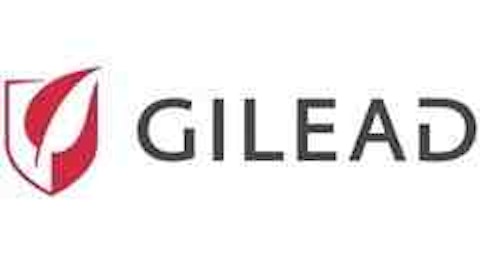You have plenty of choices of where to invest your portfolio. It’s hard to hit every sector — and do it well — but I think most investors should have some exposure to the health-care industry. It offers a little bit of everything. Some companies offer stability — everyone gets sick even during recessions — and there’s potential for hypergrowth from smaller biotechs.
Here are some suggestions on where to invest to increase your health-care exposure.
Where to invest: a health-care conglomerate

But for this section, I’m going to recommend Johnson & Johnson (NYSE:JNJ) , because it offers a little more breadth with exposure to the medical-device industry. Johnson & Johnson also has a large consumer health-care division offering everything from Tylenol to Band-Aids. Pfizer Inc. (NYSE:PFE) and Merck & Co., Inc. (NYSE:MRK) also have consumer-health divisions, but they’re considerably smaller than Johnson & Johnson’s division, both in overall size as well as a percentage of the sales.
| Company | Q1 2013 Consumer Health Sales (in Millions) | Percent of total revenue |
|---|---|---|
| Johnson & Johnson | $3,675 | 21% |
| Pfizer | $811 | 6% |
| Merck | $571 | 5% |
Source: Company releases.
Johnson & Johnson stock has been on a tear lately, but it still looks fairly valued even after the long run up.
Where to invest: a big biotech
You have basically four choices here: Gilead Sciences, Inc. (NASDAQ:GILD), Celgene Corporation (NASDAQ:CELG), Amgen, Inc. (NASDAQ:AMGN), and Biogen Idec Inc. (NASDAQ:BIIB). Amgen, Inc. (NASDAQ:AMGN) is the only one that offers a dividend. There isn’t much growth left there, but it’s hard to argue with the cash that Amgen throws off.
For a little more growth, but not much more risk than a large pharma, Biogen Idec Inc. (NASDAQ:BIIB) seems like a good choice. The company has a new oral multiple sclerosis drug, Tecfidera, that’s having an amazing launch. And Biogen produced good data for a hemophilia program, which seems destined for FDA approval.
Where to invest: a speculative biotech
There are plenty of choices here, some with higher risk/reward scenarios than others, but for a long-term choice, Sarepta Therapeutics Inc (NASDAQ:SRPT) looks like a good choice. In a small study, it appears Sarepta Therapeutics Inc (NASDAQ:SRPT)’s Duchenne muscular dystrophy drug, eteplirsen, helps boys with the disease walk further.
The biggest issue now is whether the small trial is enough for accelerated approval. The Food and Drug Administration recently asked the company for additional data before making its decision about whether the company should file for approval.
From a long-term perspective it doesn’t really matter, but if the company has to run a larger phase 3 trial before approval, shares will certainly sink in the short term as the company won’t have any revenue coming in and may have to raise capital to pay for the trial and launch.
Where to invest: a health insurer
This one is optional as far as I’m concerned. Health insurers are a different beast altogether. They’re not necessarily recession-resistant, because when people lose their jobs, they lose their health insurance. But those who know they’ll have health-care expenses greater than the cost of the premium are most likely to keep their coverage under COBRA, which cuts into insurers’ margins. There’s also political risk, as health insurers are easy targets for politicians to pick on.
If I was going to invest in one, UnitedHealth Group Inc. (NYSE:UNH) makes most sense, simply because its larger size should allow for more diverse revenue streams from government and private insurers. The overhead is also spread over more revenue, allowing for larger margins.
Bottom line: diversify
You don’t necessarily need to pick a company from each category. If you’re a retiree or have growth elsewhere in your portfolio, perhaps a speculative biotech isn’t appropriate. If you’re young, maybe Johnson & Johnson isn’t really necessary. But having some exposure to the health-care industry should help you round out your portfolio.
The article Where to Invest for More Health-Care Exposure originally appeared on Fool.com and is written by Brian Orelli.
Fool contributor Brian Orelli has no position in any stocks mentioned. The Motley Fool recommends Celgene, Gilead Sciences, Johnson & Johnson, and UnitedHealth Group and owns shares of Johnson & Johnson.
Copyright © 1995 – 2013 The Motley Fool, LLC. All rights reserved. The Motley Fool has a disclosure policy.


